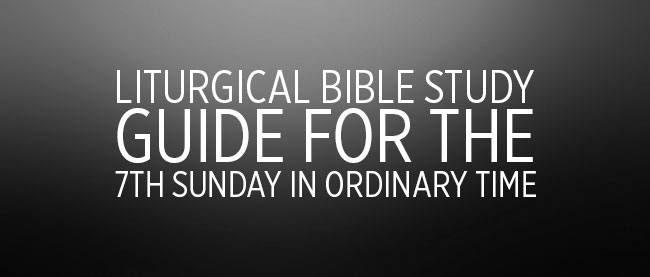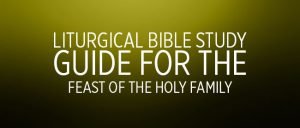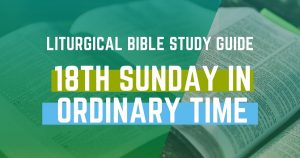Gospel – Luke 6:27-38
Last week we began Jesus’ Sermon on the Plain and we heard the four blessings (beatitudes) and the four curses (woes). The final woe was “Woe to you when all speak well of you. Their fathers treated the false prophets in just this way.” We now hear Jesus tell us to love our enemy.
1st Reading – 1 Samuel 26:2, 7-9, 12-13, 22-23
First and second Samuel and first and second Kings were known in the Vulgate as 1
through 4 Kings, following the grouping of the Septuagint, or Greek version, of the Old
Testament. This places them in the section of historical books. The Hebrew Bible located 1st and 2nd Samuel among the “later prophets.” The New Vulgate shows 1st and 2nd Samuel and 1st and 2nd Kings as separate and keeps them in the historical portion.
Hebrew tradition says that the book of 1st Samuel was written by the Prophet
Samuel himself, at least up to Chapter 25 where his death is described. The rest of 1st
Samuel and all of 2nd Samuel are attributed to two other prophets, Gad and Nathan.
However, some scholars question the attribution of the first part of 1st Samuel to Samuel on the grounds that the events it recounts refer to a period other than that in which Samuel lived. Some think Ezra wrote Chapters 1 through 25, using an early original of Samuel’s and various writings from the time of King David to produce a survey of the period from the start of the monarchy up to the end of David’s reign, a period of some 150 years.
The main purpose of 1st and 2nd Samuel is to provide a history of the founding of the
kingdom of Israel and the settlement of the throne on King David and his line. Samuel, who is regarded as the last of the judges, was the man chosen to bring about the unification of Israel. God used him to make Saul the first king of Israel. 1st and 2nd Samuel are structured in four parts, with an appendix. The first part (1 Samuel 1 through 7) covers the miraculous birth of Samuel and his upbringing in the temple. In the second part (1 Samuel 8 through 15) the establishment of the monarchy is described and the consecration of Saul as king. The third section (1 Samuel 16 through 2 Samuel 1) deals with the relationship between Saul and David. Our reading today comes from this section. In the fourth part (2 Samuel 2 through 20) the narrative centers on David: the civil war, the transfer of the ark to Jerusalem, the messianic promise that an eternal throne will be given to one of David’s lineage; and David’s adultery, repentance, and death. The appendix is 2 Samuel 21 through 24.
As background for our reading today, Samuel has anointed Saul as king at God’s
direction and the people have confirmed it. But some time later Saul has disobeyed God and God has rejected him and told Samuel to anoint David. Saul, in his jealousy, does everything he can to kill David and David has to flee with Saul in pursuit. Saul has three thousand men and David’s band numbers about six hundred. Even though Saul is trying to kill David, David does not reciprocate.
2nd Reading – 1 Corinthians 15:45-49
Last week in our study of 1 Corinthians we heard Saint Paul explain to the Corinthians about the resurrection of the dead since it appears that some had questioned if resurrection was a reality. Saint Paul said “If the dead are not raised, your faith is worthless (in vain).”
Saint Paul then goes on to deal with two associated questions: What is the resurrected body like (1 Corinthians 15:44a), and what reason is there to think that such a body really exists (our reading today). In answering the question “what is the resurrected body like,” Paul uses comparisons from the vegetable, animal, and mineral worlds: A grain of wheat dies to become a plant whose form is determined by God. Likewise, God provides every animal with a body adapted to the circumstances of its existence. Even the sun, moon, and stars have their own individual brightness as determined by God. God determines what the resurrected body is like.
Now, we hear the answer to the second question: “What reason is there to think that such a body really exists?”





